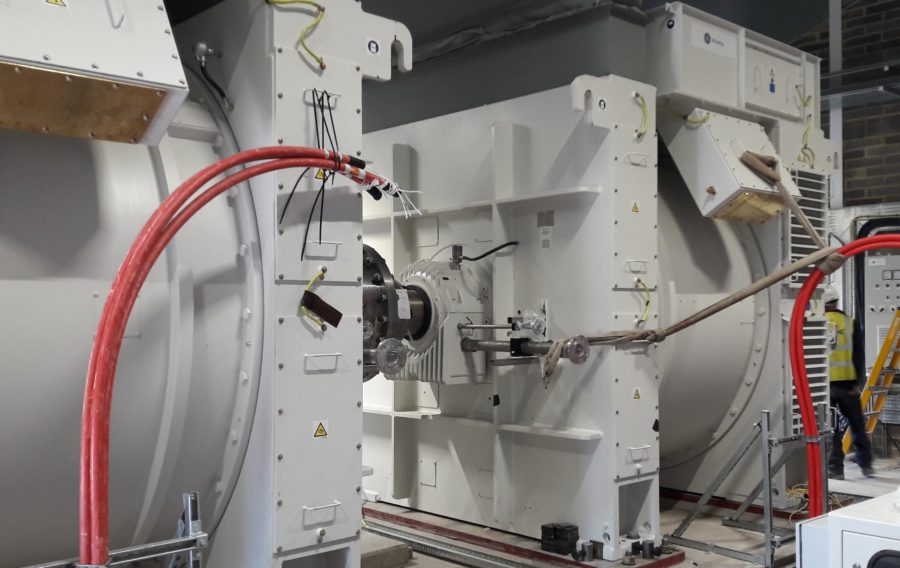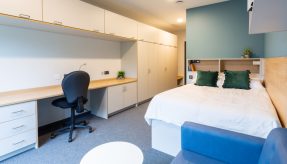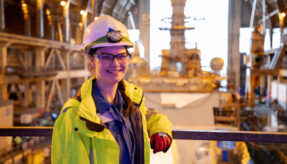
Facilities to power the Royal Navy’s new aircraft carriers have taken a major step forward with the delivery of a frequency converter. The frequency converter will play a major part in providing the ships with enough electricity to power a small town.
When at their home port, HMNB Portsmouth, HMS Queen Elizabeth and HMS Prince of Wales will be supplied with electricity through a new substation which has been built at the naval base by the Defence Infrastructure Organisation (DIO).
The frequency converter consists of two parts, the converter itself and the motor, each weighing 50 tonnes. The conversion is vital as ships all over the world operate on an electrical frequency of 60Hz, but the National Grid is 50Hz. The substation has been connected to the National Grid using around 2.6 miles of cable and supplies enough electricity to power a small town. The substation building has been complete for several months but fitting-out continues.
Electricity will be supplied to the vessels using a hydraulic boom, which ‘plugs in’ to the side of the ship. The boom is being constructed in Italy and will be delivered in early 2017.
The new aircraft carriers will be the biggest and most powerful ships in the history of the Royal Navy, projecting the UK’s global influence wherever they sail. They will be supplied with F-35B stealth fighter aircraft.
The work is being undertaken by VolkerStevin, who are also upgrading the jetty and installing navigational aids on behalf of the DIO.
Philip Wise, DIO Project Manager, said: “I’m delighted to see the delivery of the frequency converter, a clear sign of the progress we and VolkerStevin are making on these facilities. The substation is vital for HMS Queen Elizabeth and HMS Prince of Wales so we’re pleased to be playing our part in supporting the country’s new aircraft carriers.”
Image shows a frequency converter in the substation on Middle Slip Jetty (soon to be renamed Princess Royal Jetty) at HMNB Portsmouth.
If you would like to read more articles like this then please click here
aircraft carriers DIO frequency converter HMNB Portsmouth HMS Prince of Wales HMS Queen Elizabeth Philip Wise Project Manager Royal Navy







